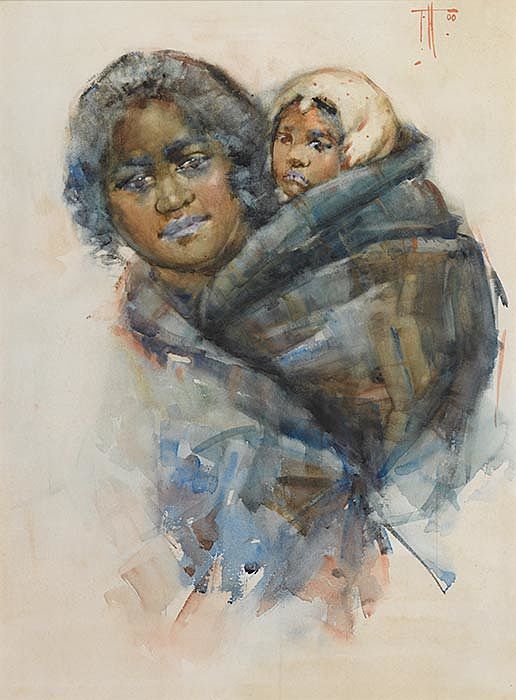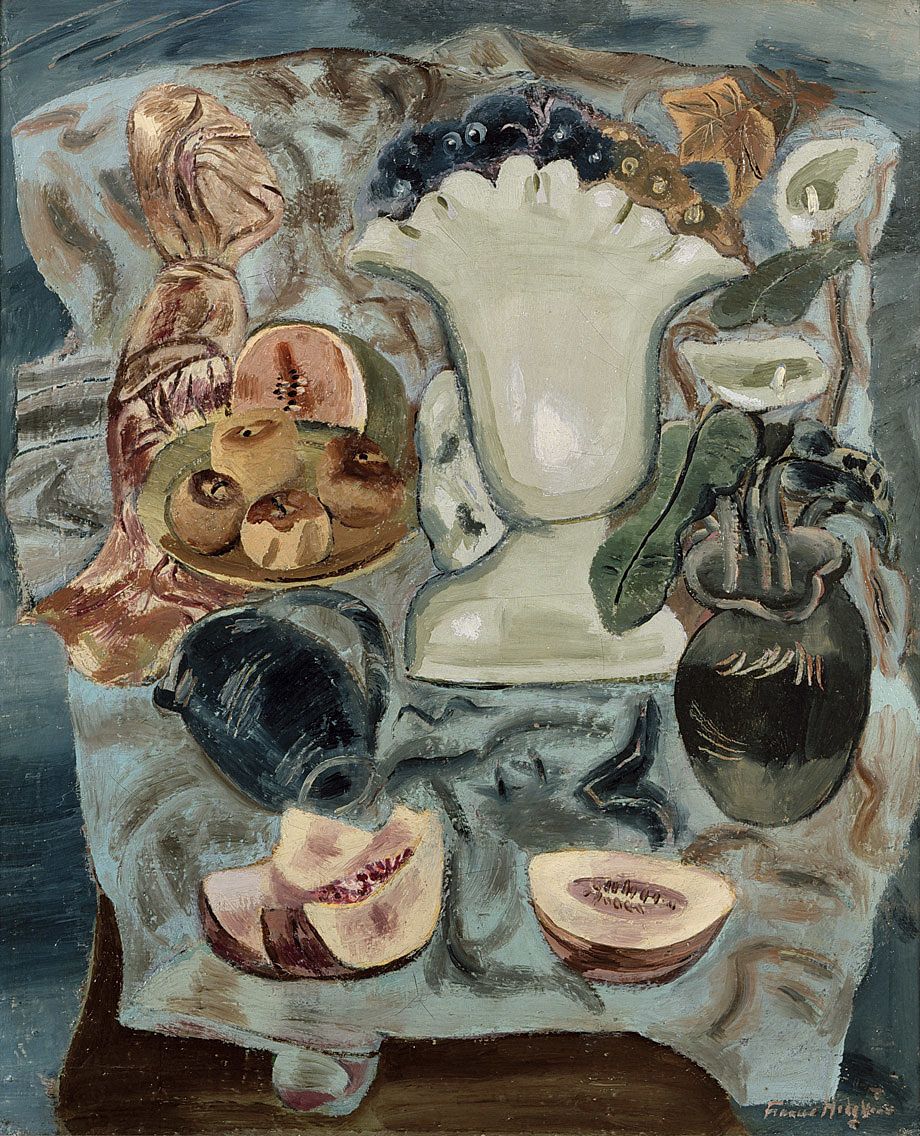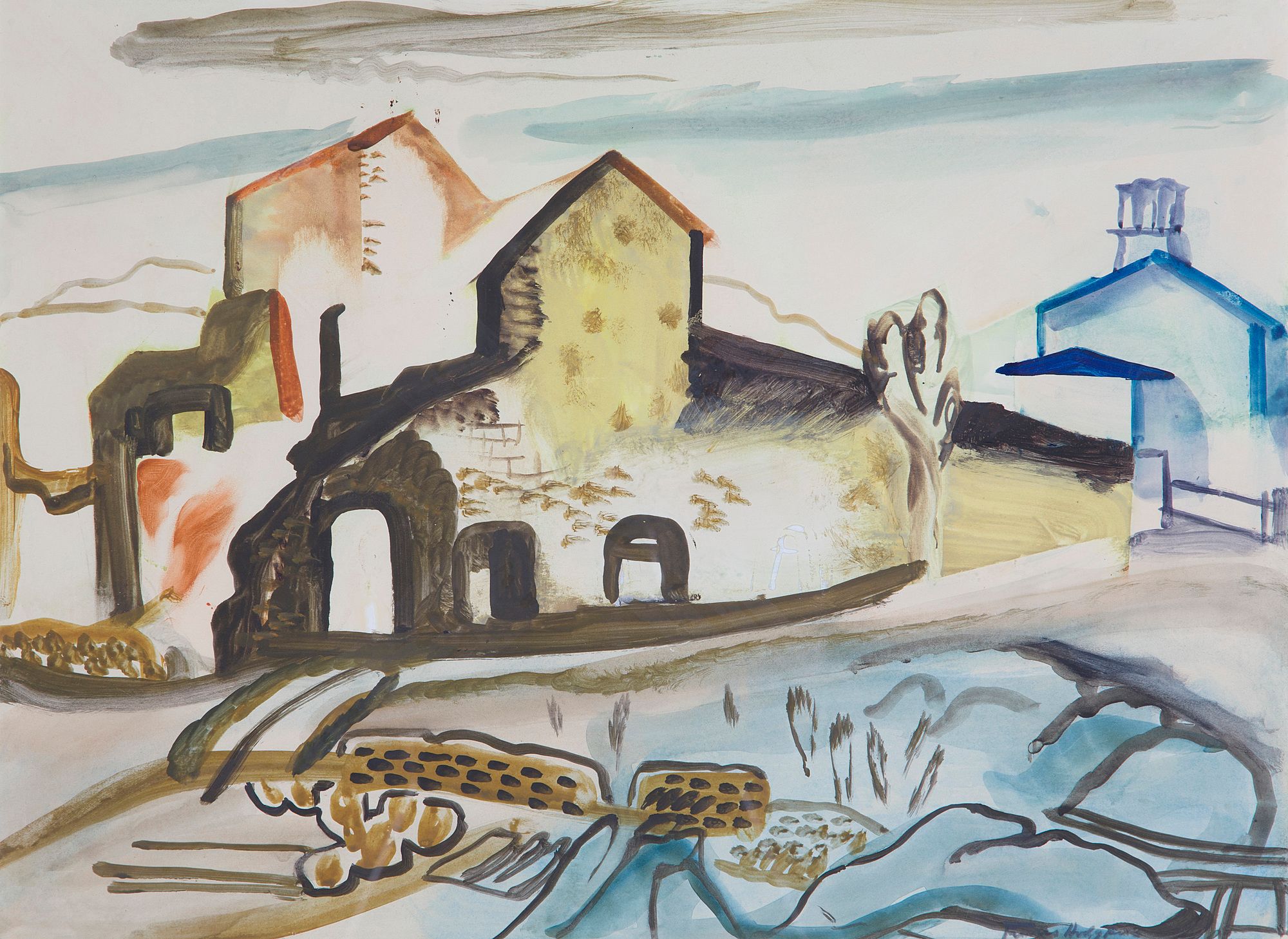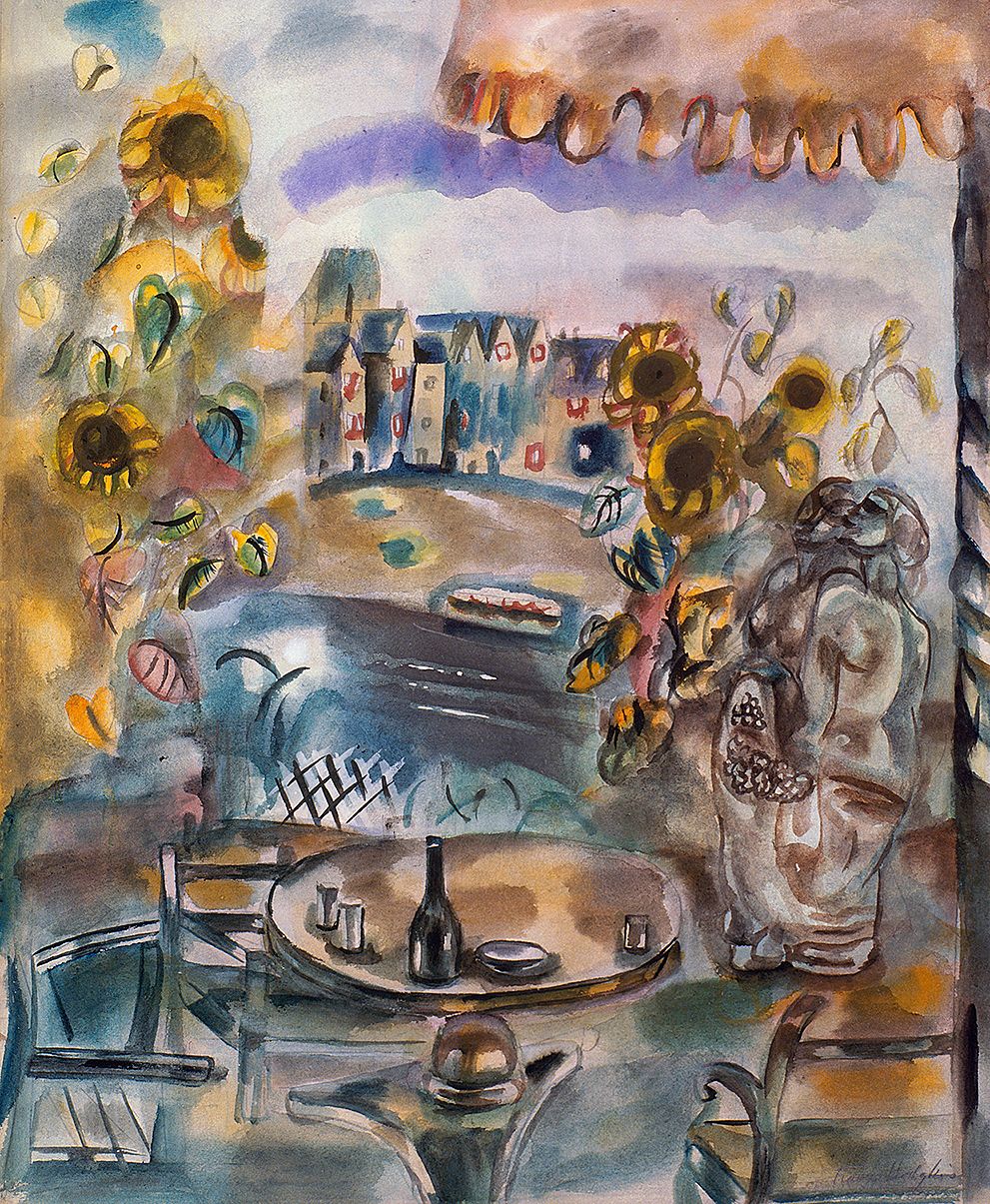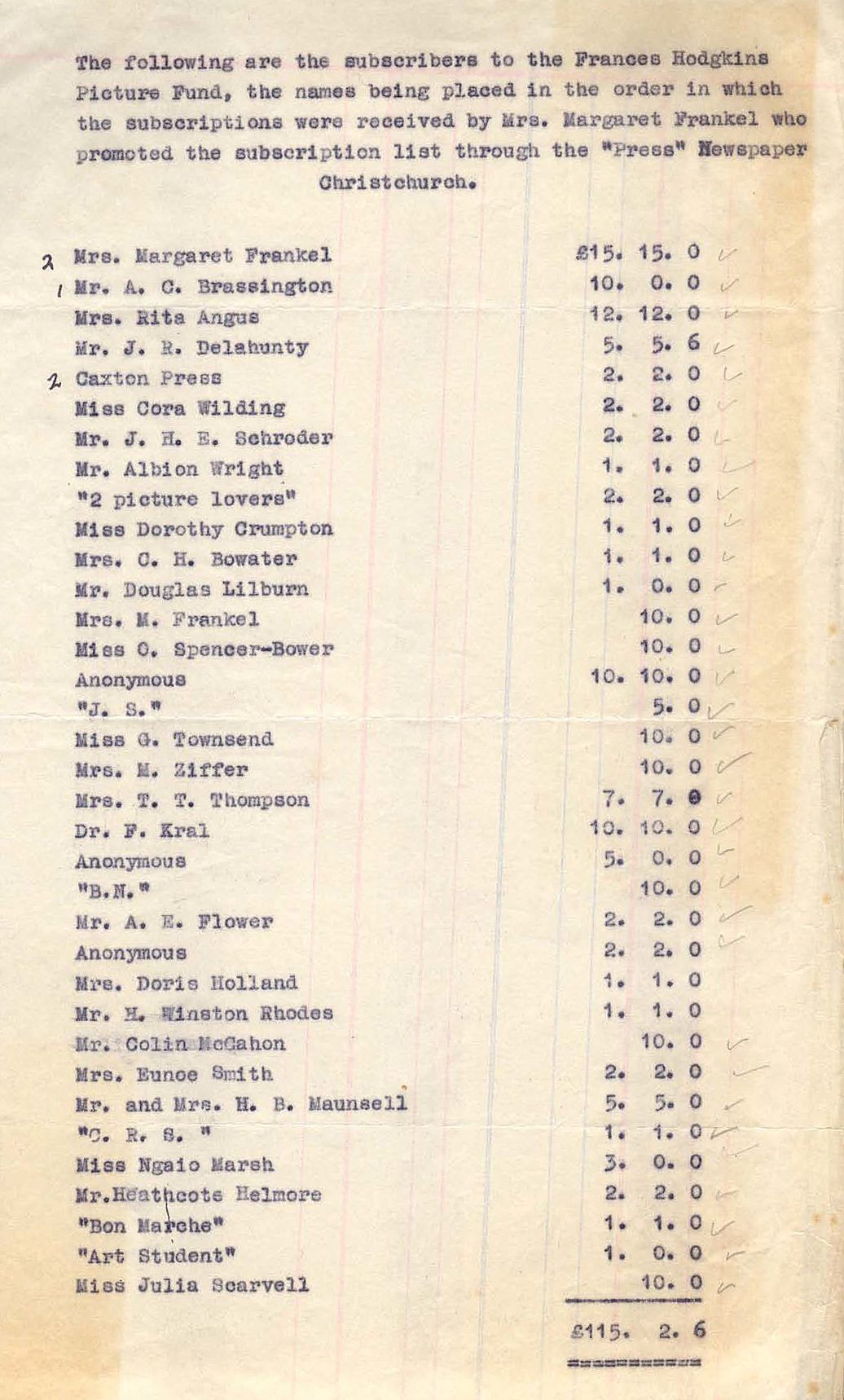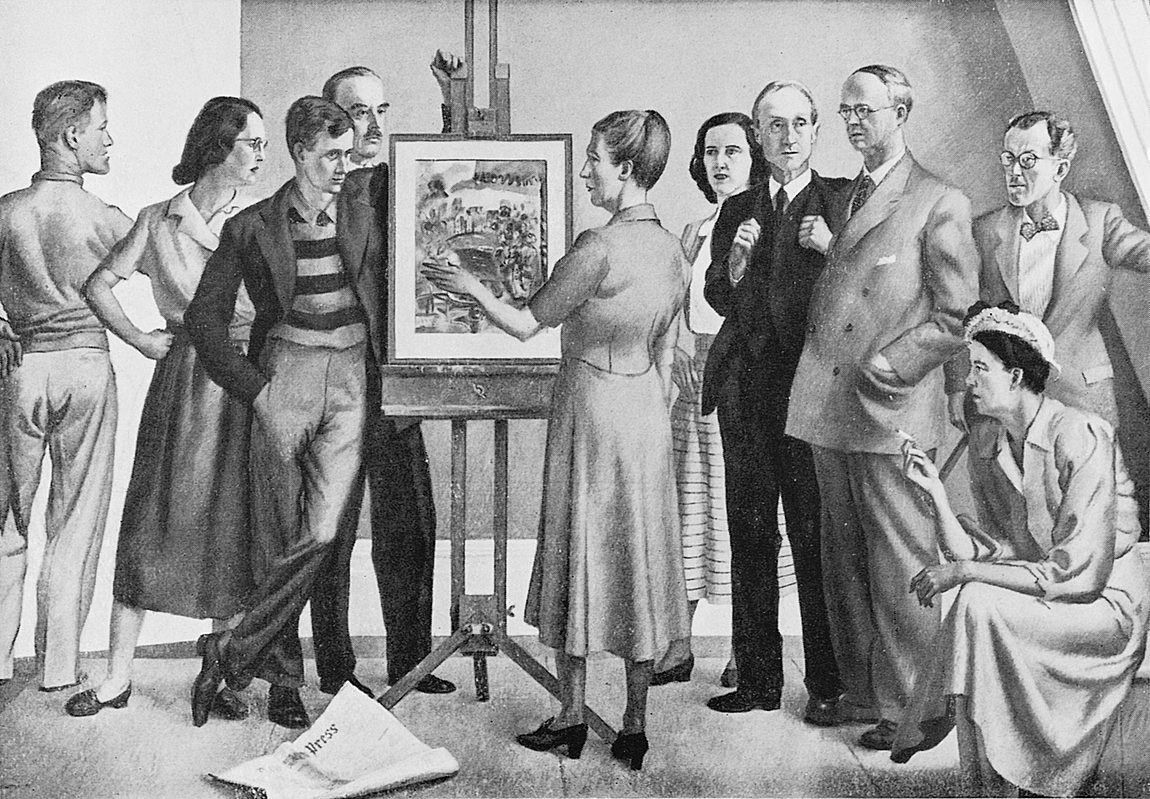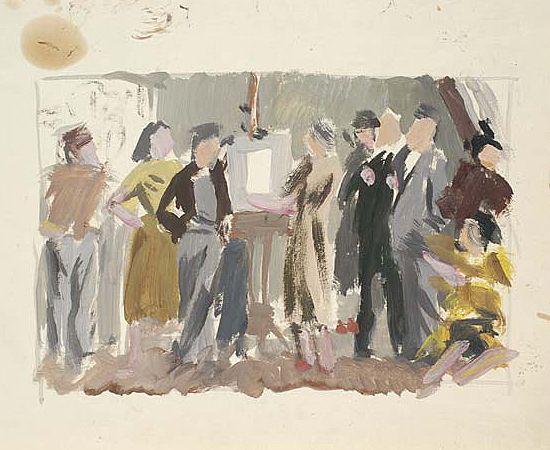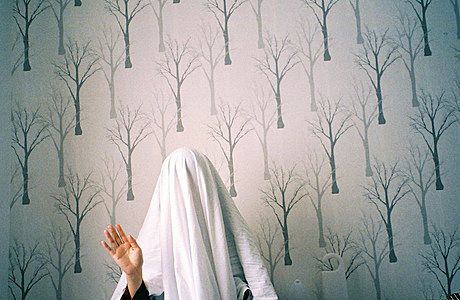From the Archives: The 'Pleasure Garden' Incident at Christchurch
Margaret Frankel on Frances Hodgkins's 'Pleasure Garden' (1932), a painting by turns loved and scorned by the citizens of post-war Christchurch.
Margaret Frankel on Frances Hodgkins’s Pleasure Garden (1932), a painting by turns loved and scorned by the citizens of post-war Christchurch.
‘The Pleasure Garden Incident at Christchurch’ was written by painter, potter, and art advocate Margaret Frankel (1903–77). It first appeared in Year Book of the Arts in New Zealand No. 5 (1949), edited and published by Harry H. Tombs. We are republishing the essay here to lend additional context to ongoing arguments about the status of contemporary art in Aotearoa, and in anticipation of the release of Peter Simpson’s Bloomsbury South: The Arts in Christchurch 1933–1953 (2016). A product of many years of research, Simpson’s book tells the story of a group of progressive, Christchurch-based thinkers and creators, including Frankel, who participated in a radical reshaping of the cultural landscape of New Zealand in the 1930s through ’50s, and who were closely involved in the curious happenings recounted in this essay.
*
The Pleasure Garden Incident at Christchurch
At the annual meeting of the Canterbury Society of Arts held early in 1948 it was decided to request the British Council to select several paintings by the late Frances Hodgkins to be sent out to Christchurch. The sum of £200 [the New Zealand pound was not replaced by the dollar until 1967] was set aside for the purchase of a picture for the Society’s collection.
As a member of the council about to visit England, I was given a letter of introduction from the President of the Canterbury Society of Arts to Major A. A. Longden who had been, until his recent retirement, director of the Fine Arts Department of the British Council. His successor, Mrs Horace Somerville, was, when I arrived in London, already in search of suitable pictures and she invited Major Longden to assist her in making the final choice. The British Council organises frequent exhibitions of art to be shown abroad as part of their work in bringing British culture before other nations. The staff of the Fine Arts Section are, therefore, in an excellent position to know the work of contemporary painters in Britain. For their exhibitions they are able to draw on pictures generously lent them by private collectors, as well as from the commercial galleries, which in England play a large and useful part.
Mrs Somerville asked me to accompany her, Mr Francis Wilson, Director of the Visual Art Department, and Major Longden when they went to the galleries of Messrs Reid and Lefevre, where the largest collection of Frances Hodgkins’s work is to be seen. For the New Zealander coming fresh into this work of contemporary British art it was an enviable experience to watch the experts at work. The director of the gallery had all the pictures within our price range brought out for our inspection and the examination and discussion went on. Few of the paintings we saw that morning were new to Mrs Somerville or Major Longden; they knew them intimately and judged them against the background of Frances Hodgkins’s whole development. Mrs Somerville was anxious to select typical works, pictures that would give New Zealand an idea of the artist’s later period and technique. At last, from the twenty-odd pictures we had seen, three watercolours and one oil were selected. Of these, three had already been shown in British Council exhibitions: the Still Life with Fruit Dishes in the exhibition of British Contemporary Art in Sweden; Flowers and Spanish Pottery at Hereford House (Wallace Collection), 1940; Ruined Tin Mine at the Brooklyn Museum in the British watercolours exhibition.
Later we returned to the British Council to see the paintings Mrs Somerville had there. The beautiful regency rooms on Portland Place are hung with an exciting collection of contemporary art. There we saw the fine still life that now hangs in the Dunedin gallery [i.e. Still Life with Fruit Dishes (c. 1937)]. This, too, had been exhibited in the exhibition in Sweden. I had the feeling that Mrs Somerville and Major Longden were well pleased with their selection; little did they realise how it would agitate the art world of the artist’s native land.
I have given this description so that people here may understand how the pictures were chosen. Though they were all owned by art dealers, which, by the way, is the normal practice in England; they were chosen by a group of experts whose background and training has given them the necessary qualifications to be sound judges of contemporary painting.
When the pictures arrived in New Zealand the Council of the Canterbury Society of the Arts decided, by majority vote, not to make a purchase. In a statement to The Press the secretary said that instead it had been decided to “use the funds more wisely”. All six paintings were on view in the Durham Street Gallery during the group exhibition in October, but underneath was a notice requesting that no reference should be made to them in the newspapers. The reason for this was never made clear.
Later the Dunedin Art Gallery exhibited the pictures and, although the trustees did not see fit to buy one, they accepted the anonymous gift of the still life already mentioned. The Suter Gallery, Nelson, has also accepted The Ruined Tin Mine, Wales [i.e. Ruined Mine, Wales (1932)], reproduced in the recent Penguin Modern Painters number on Frances Hodgkins, and subscribed for by anonymous donors. As far as I know neither Wellington nor Auckland art organizations asked to see the pictures; but an inquiry from a Wellington educational body anxious to exhibit the paintings appears to have received scant welcome from the officers of the Canterbury Society of Arts.
It remained for the City of Christchurch to make history and refuse “on its merits” The Pleasure Garden [i.e. Pleasure Garden (1932)]. This poetic and imaginative watercolour was described by Mrs Somerville, when she saw it at the Lefevre Galleries, as very typical of Frances Hodgkins’s work. It had just come on the market from a private collection.
It had not been at all difficult to find subscribers ready and willing to give money for this painting so that the Robert McDougall Gallery [now Christchurch Art Gallery Te Puna o Waiwhetu] might have at least one picture by this famous New Zealander. The Press undertook to receive and publish donations and the necessary sum of £94/10/- [i.e. 94 pounds and 10 shillings] was over-subscribed by 39 persons within a fortnight. However, we had to wait almost two months before the Canterbury Society of Arts at last answered our request to sell us the picture on behalf of the British owners.
The Robert McDougall Gallery is administered by the Christchurch City Council with the assistance of an advisory committee of three, nominated by the Council of the Canterbury Society of Arts; all three are members of that council. Two have been in office since 1932 when the gallery was opened, and the third replaced a deceased member a few years later. It has become apparent that new nominations have neither been asked for by the Council nor offered by the Society. These three gentlemen advise the City Council on policy, on the purchase of pictures, and on the acceptance of gifts made to the gallery.
When the Mayor, Mr E. H. Andrews, informed the subscribers that their gift of The Pleasure Garden had been refused “on its merits,” a deputation from the subscribers asked to be received by the City Council.
Interest in the controversy grew with every new development. One of the largest drapery shops in Christchurch asked to be allowed to exhibit The Pleasure Garden in its window. During the week it was there many people must have seen a modern picture for the first time. Crowds stopped to glance or gaze according to interest and temperament. During busy times it was necessary to queue to see the picture. The Press, which had already given much space to the controversy in its correspondence columns, published an article “Judging a Picture, the Passerby as Critic,” a description of things overheard while looking at the painting; and another historical article giving the background of modern painting. Painting, pictures, and Frances Hodgkins were news in Christchurch and never before had so many people talked and thought about art. A telegram from interested people in Wellington was received by the Mayor of Christchurch. Members of the staff of Canterbury University College asked for the loan of the painting for their common room and sent a petition to the Mayor signed by sixty-nine professors and lecturers.
The deputation consisting of Mr A. C. Brassington, Mr H. G. Helmore, and myself was received by the City Council on July 18th. The advisory committee – Messrs Cecil Kelly, A. F. Nicoll, and Richard Wallwork – were in attendance. The Pleasure Garden stood on an easel in the council chamber. We first gave an account of how the picture came to be in New Zealand, the way it had been chosen, and the place Frances Hodgkins held in British art. We pointed out that she was not interested in making a photographic representation of what she saw before her at a given moment, but rather in making an abstraction of the feelings suggested to her sensitive mind by the subject. The subtle colouring and the carefully thought out composition all had to be studied to be appreciated. Exaggerations which might be considered faults of drawing were made purposely to strengthen the form and rhythm. The difficulties of judging one isolated picture without the proper background of knowledge and other paintings for comparison was stressed. We pointed out that virtually no modern art has reached New Zealand. Young artists in this country have no opportunity to study at first hand different lines of thought in painting.
We told the Council that in our opinion the advisory committee represented only one school of painting. We would like to see a much larger committee drawn from wider circles and capable of planning a progressive policy for the Robert McDougall Gallery.
After the deputation withdrew the Council went into committee to hear and question the advisory committee. When Council resumed in open meeting the chairman of the Finance and Bylaws Committee (which administers the gallery) moved that The Pleasure Garden be declined. He said that it was unfortunate that the donors had chosen a picture which was not up to the standard one would wish to see in the gallery and that the committee had given sounder reasons for its rejection than the deputation had for its acceptance.
As councillor after councillor spoke to the motion it became clear, first, that individually they did not like, or could not understand the painting, therefore it should be declined; second, that they were not prepared to pass a vote of no-confidence in the advisory committee. The wider issues of policy and control of the gallery were touched on by only two councillors, and theirs were the only votes against the motion.
In the following day’s newspapers the advisory committee’s report became known. The memorandum to the council was signed by A. F. Nicoll, and Cecil Kelly was associated with it. It is now known that the committee’s verdict was not unanimous.
The report begins with remarks about “the small coterie wishing to substitute its view for that of the advisory committee”; the “significantly small” number of subscribers to the fund; the St. George Gallery, “another art dealers’ establishment among the many that have sprung up in London”; Eric Newton, art critic to the Sunday Times, whom they call a writer of nonsense.
The following passage is the only one published which deals with the painting itself: “Now Messrs Cecil Kelly and A. F. Nicoll have known the work of Frances Hodgkins for some forty years and hold her in high esteem as an artist. At the same time they can claim to be able to discriminate amongst her works of varying standards and think it most unfortunate that this particular example The Pleasure Garden of all her work should have been the one to be offered as a gift to the city’s collection. The committee had no option but the advise the council against its acceptance, deeming it unworthy, both of Frances Hodgkins and of the McDougall Gallery.” Finally the committee quotes a letter to the New Zealand Listener from Frances Hodgkins’s brother, in which he considers “the exhibition of [his] late sister’s more modern work … both unjust to the artist and to the public.”
These happenings have raised questions of policy and finance in relation to the city’s gallery. Since 1932, when the gallery was opened and presented with the collection made previously by the Canterbury Society of Arts, not one picture had been bought until this year. In 1948, after public attention was drawn to this stagnant state of gallery administration, £100 was put on the estimates for picture purchases and this year it has been raised to £200. So far the additions have been notable for their mediocrity.
A portrait of the late Mayoress, painted after her death from a photograph, was presented by the City Council. There have been two purchases, a small seascape by Nugent Welch and a still life by Rata Lovell Smith, both bought from the annual exhibition of the Canterbury Society of Arts. The collection already contains a Nugent Welch, but this was the first painting by Rata Lovell Smith. Surely it would have been wiser to make a selection from all her work rather than from the six exhibited this year. Is the City Council advised to buy solely from the Canterbury Society of Arts exhibition? A representative collection of New Zealand art should be made and at the same time a certain sum set aside for the purchase of British and foreign paintings that would reflect the growth of modern art. We have now the money to make a start and could get the advisers to help us, but have we the will to bring it about?
On the face of it this has been a Christchurch story, but can any New Zealand city say, “It can’t happen here”?
*
Postscript
Following the publication of this essay, Margaret Frankel continued to advocate for Pleasure Garden. In 1951, artist W. A. ‘Bill’ Sutton painted a group portrait (regrettably now lost), Homage to Frances Hodgkins, showing an imagined meeting between some of the more prominent supporters of the work, including Frankel, Sutton, Doris Lusk, and Colin McCahon. That same year, the Christchurch City Council finally accepted the gift of the painting. In the preamble to his satirical poem on the Pleasure Garden incident, ‘A Phoenix in the Fowl-Run’, A. R. D. Fairburn noted that the painting hung in the Robert McDougall Art Gallery “without much civic honour”. But it still hung there – testament to a hard-won battle in the long war to introduce the New Zealand public to modern art.
In 1962, Pleasure Garden was exhibited (together with the Suter’s Ruined Mine, Wales) in a group exhibition titled Six New Zealand Expatriates at the Auckland City Art Gallery (now Auckland Art Gallery Toi o Tāmaki). In the introduction to the catalogue, Colin McCahon (then ‘Keeper’ at the Gallery) observed, “We can no longer rightfully claim [Frances Hodgkins] as a New Zealand painter, although we may feel a certain pride in ourselves belonging to the land of her birth.” Like Frankel before him, McCahon closed his essay by posing a question, “Can any land that has in any way ignored its artists justly claim as its own the refugees it has created?”
Rightly or otherwise, Hodgkins has now well and truly been claimed. Critical debate about her abilities and importance has largely died down here; she is represented in all of our main art institutions; and her influence is discernible in the work of notable contemporary painters, such as Kirstin Carlin and Milli Jannides. Next year, the 70th anniversary of her death, will see the mounting of a major exhibition at Auckland Art Gallery Toi o Tāmaki, the publication of an associated book, and the launch of an online catalogue raisonné. Pleasure Garden may be viewed today at Christchurch Art Gallery Te Puna o Waiwhetu, where it forms part of Treasury: A Generous Legacy, an exhibition of donated works. The watercolour sits proudly alongside the sorts of ‘old master’ still lifes and colonial landscapes that Hodgkins so superbly transformed.
– Francis McWhannell, Visual Arts Editor

